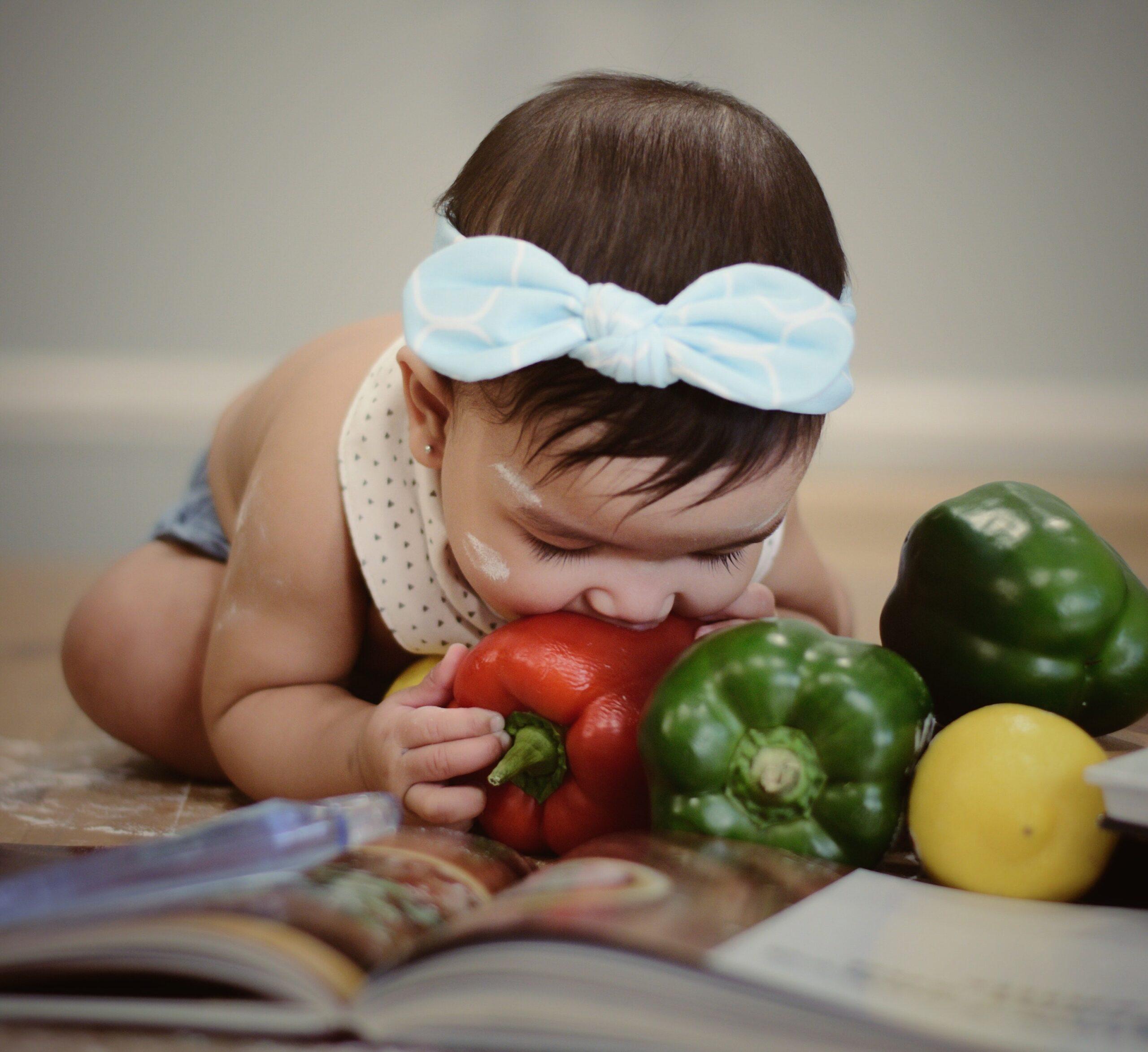Very often we notice in the online environment parents who ask what they could do to get their little one to eat a certain food that they apparently refuse.
It is obvious that we parents want the little ones to eat as varied and nutritious food as possible, and when we are faced with the refusal we do not know how to proceed and most of the time we give up the food/food in question.
As this 2017 study also highlights, there is an essential determining factor for a child to try a new food or dish: FAMILIARITY. Children like familiar things and prefer foods they know.
The repeated offering of a dish is essential!
This is what the stages of familiarization with a certain type of food can look like, but not all children go through them necessarily in this order:
1. Familiarization
Even if the dish is ignored, the simple fact that it is within the child’s visual range sets the stage for familiarity.
At the next ”meeting” with that food they will think ”ah, I know you!” .
2. Play
The touch, the smell, the fist, the throw (you know). It is quite frustrating for parents to witness these scenes, but try not to show your frustration.
This stage is very important in the process of getting to know a food! Let them play as much as they want!
We’ve talked more about why it’s ideal to let kids play with food in this article .
3. Taste stage
The fact that he licks the food, that he puts it on the tongue, that he spits it out… there are taste buds on the tongue, so even if the food is not swallowed, the taste has been felt.
Repeated experiences with certain flavors help with openness to trying new tastes.
4. The swallowing stage
It involves chewing and swallowing. Food (finally) reaches the stomach. For those who are just beginning their baby-led weaning journey, don’t worry about the amounts ingested. Most children ingest quite a bit of solid food, but it is important that they taste as diverse as possible. Bottom line, keep giving them various opportunities to explore food!
Don’t forget to be a role model!
It’s also helpful for your little one to watch another child or parent eat a portion of unfamiliar food, so continue to be a role model for them!
The final conclusion is that yes, the goal is for the little one to actually eat food, but don’t rush the process! The food left on the plate is not wasted! We can reinvent the pieces that did not come into contact with the baby’s saliva for the following meals.
We hope the information was helpful. You can follow us on Instagram or Facebook .












0 Comments for “How do we get little ones to eat certain foods?”